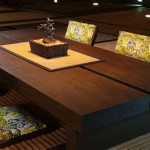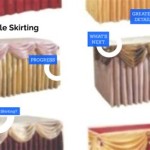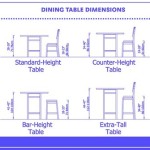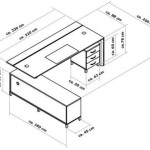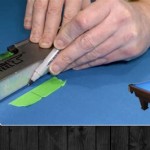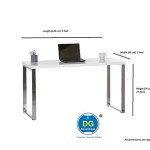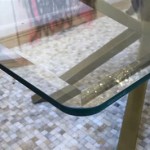Round Extension Dining Table: A Versatile and Elegant Choice
The round extension dining table represents a compelling solution for homeowners seeking both aesthetic appeal and functional flexibility in their dining space. Unlike rectangular or square tables, the round form fosters a sense of inclusivity and conversation, while the extension mechanism allows for accommodating larger groups when necessary. This article will delve into the key aspects of round extension dining tables, exploring their design considerations, functional benefits, material variations, and practical applications.
Design Considerations and Aesthetic Versatility
A primary advantage of the round extension dining table lies in its inherent design flexibility. The circular shape naturally promotes eye contact and equal engagement among diners, making it ideal for fostering intimate conversations and a welcoming atmosphere. This contrasts with rectangular tables, where individuals seated at the ends of the table can sometimes feel somewhat disconnected from the central conversation. The absence of corners in a round table also contributes to a more relaxed and informal dining experience.
Furthermore, the round shape can be particularly beneficial in smaller dining areas. By minimizing sharp angles, the table creates a smoother flow of movement around the room, making the space feel less cramped. When extended, the table typically transitions into an oval shape, maintaining a sense of balance and visual harmony. This transformation provides the necessary surface area for larger gatherings while retaining a relatively compact footprint when not fully extended.
The aesthetic adaptability of round extension dining tables is another significant advantage. They can seamlessly integrate into a wide range of interior design styles, from traditional to contemporary. A solid wood table with a pedestal base might complement a rustic or farmhouse-inspired decor, while a table with sleek metal legs and a glass or lacquered top can enhance a modern or minimalist setting. The choice of materials, finishes, and detailing allows homeowners to tailor the table to their specific aesthetic preferences.
When considering the extension mechanism, several design options are available. Some tables feature leaves that are stored separately and inserted into the table's center when needed. Others incorporate a butterfly leaf mechanism, where the leaf is concealed beneath the tabletop and unfolds smoothly when the table is extended. The choice of mechanism can impact the overall appearance and ease of use of the table.
Functional Benefits and Practical Applications
The core functionality of a round extension dining table resides in its ability to adjust its size according to the number of diners. This adaptability makes it a practical choice for households that regularly host guests, whether for formal dinner parties or casual family gatherings. The extension mechanism allows the table to comfortably accommodate a larger group without requiring a significantly larger table to be permanently occupying valuable floor space.
Beyond accommodating larger groups, the extension feature offers versatility in everyday use. A smaller round table can be ideal for daily meals for smaller families, while the extended configuration provides ample space for larger meals on weekends or holidays. This eliminates the need to invest in multiple dining tables or to constantly rearrange furniture to accommodate varying needs.
The shape of the table also contributes to its functional advantages. As stated earlier, the round form promotes conversation and creates a more inclusive dining experience. This can be particularly beneficial for families with young children, as it encourages interaction and reduces feelings of isolation during mealtimes. The absence of sharp corners also minimizes the risk of accidents, making it a safer option for households with young children or elderly individuals.
In practical applications, round extension dining tables can be utilized in a variety of spaces. They are well-suited for formal dining rooms, kitchens with dining areas, or even smaller apartments where space is limited. The ability to adjust the table's size makes it a versatile and adaptable piece of furniture that can meet the evolving needs of the household.
Material Variations and Durability Considerations
The longevity and aesthetic appeal of a round extension dining table are significantly influenced by the materials used in its construction. A wide range of materials are available, each offering distinct characteristics in terms of durability, maintenance, and visual impact. Selecting the appropriate material is crucial for ensuring that the table meets the homeowner's specific needs and preferences.
Solid wood remains a popular choice for dining tables due to its natural beauty, durability, and timeless appeal. Different types of wood offer varying levels of hardness, grain patterns, and color tones. Hardwoods such as oak, maple, and walnut are known for their strength and resistance to scratches and dents, making them ideal for high-traffic areas. Softwoods such as pine and cedar are more susceptible to damage but can be appealing for their rustic charm and affordability.
Veneered wood offers a more cost-effective alternative to solid wood while still providing a similar aesthetic. Veneer consists of a thin layer of wood bonded to a substrate material, such as plywood or MDF. While veneered tables may not be as durable as solid wood tables, they can still provide a robust and attractive surface if properly constructed and maintained.
Glass and metal are also increasingly popular materials for round extension dining tables, particularly in contemporary settings. Glass tabletops offer a sleek and modern look and are easy to clean. However, they can be more prone to scratches and fingerprints. Metal legs and frames provide strength and stability and can be finished in a variety of colors and textures.
The extension mechanism itself is also a critical factor in the table's durability. Mechanisms should be constructed from high-quality materials and designed for smooth and reliable operation. Consider the ease of use and the potential for wear and tear when selecting a table with an extension feature.
Maintenance is essential for preserving the appearance and longevity of any dining table. Wood tables should be regularly cleaned with appropriate wood cleaners and occasionally treated with furniture polish. Glass tables should be cleaned with glass cleaner to remove fingerprints and smudges. Metal tables can be wiped down with a damp cloth. Preventative measures, such as using coasters and placemats, can also help protect the table's surface from damage.
Ultimately, the choice of material will depend on the homeowner's budget, style preferences, and lifestyle. By carefully considering the characteristics of different materials and the construction quality of the table, it is possible to select a round extension dining table that will provide years of enjoyment and functionality.

Brooklyn Round Extending Dining Table Fairway Furniture

15 Extendable Dining Tables Best Extending

Manor Extension Dining Table Round To Oval Furniture On Main

Devon 54 Round Extension Dining Table

Modern Farmhouse Round Pedestal Extending Dining Table Pottery Barn

Cs4137 Elson Round Extension Dining Table Reviews Calligaris

Porada Bryant Round Extending Wooden Dining Table Contemporary Room Furniture Ultra Modern

Caracole Classic Round Extension Dining Table Bloomingdale S

Teak Extendable Dining Table Snowdon Extension

Cau Toffee Finish Parquetry 125 175cm S Homewares

